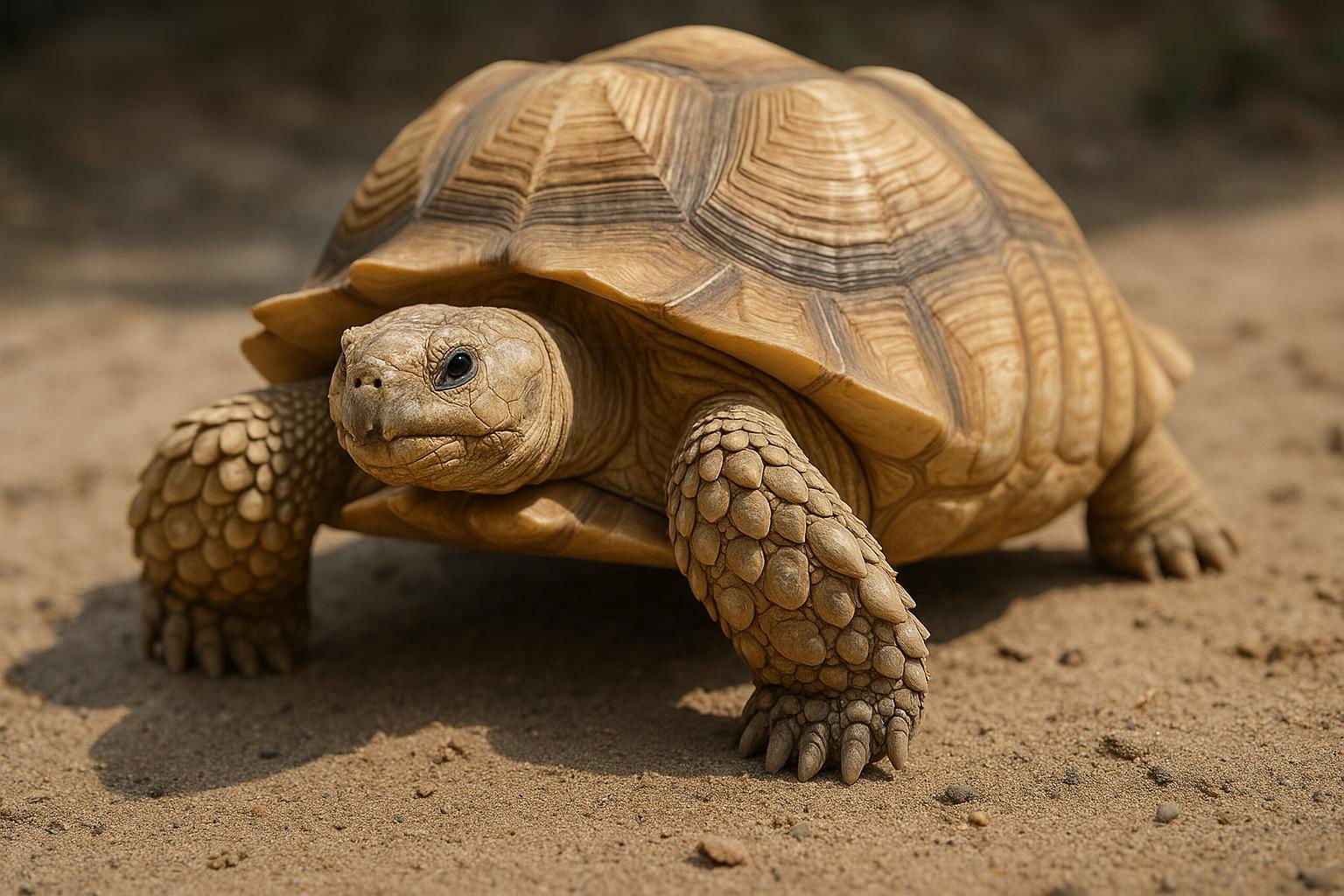
African Spurred Tortoise
Geochelone sulcata
The African Spurred Tortoise, scientifically known as Geochelone sulcata, is a remarkable species native to the southern edge of the Sahara Desert, encompassing regions of northern Africa such as Chad, Mali, and Sudan. Recognized as the third-largest tortoise species in the world and the largest on the African continent, adult sulcatas can weigh between 70 to 100 pounds, with some individuals reaching up to 200 pounds, while their shell lengths often exceed 30 inches.
Distinctive by their thick, sturdy shells and impressive longevity, which can surpass 70 years, these tortoises have adapted superbly to their arid habitats. Their name is derived from the prominent, spurred scales found on their forelimbs, which help them dig burrows to escape extreme temperatures. The burrowing behavior also aids in moisture conservation; the tortoises often reside in these self-made shelters during the hottest parts of the day.
Herbivorous by nature, the African Spurred Tortoise feeds on a diverse diet of grasses, succulents, and occasional fruits; their ability to metabolize cellulose efficiently allows them to thrive in environments with sparse vegetation. Equipped to endure periodic droughts, they can survive without water for extended periods by utilizing stored water in their bladders.
Due to habitat loss and pressure from the pet trade, the African Spurred Tortoise is considered vulnerable. Efforts are underway to conserve their natural habitats and regulate breeding practices to ensure their continued survival in the wild. These gentle giants continue to captivate the interest of conservationists and enthusiasts worldwide with their unique adaptations and gentle demeanor.

 All Species & Breeds
All Species & Breeds
 Highland Cattle
Highland Cattle
 Miniature Donkeys
Miniature Donkeys
 All Species Directory
All Species Directory
 Highland Cattle in Virginia
Highland Cattle in Virginia
 Miniature Donkeys in Texas
Miniature Donkeys in Texas












